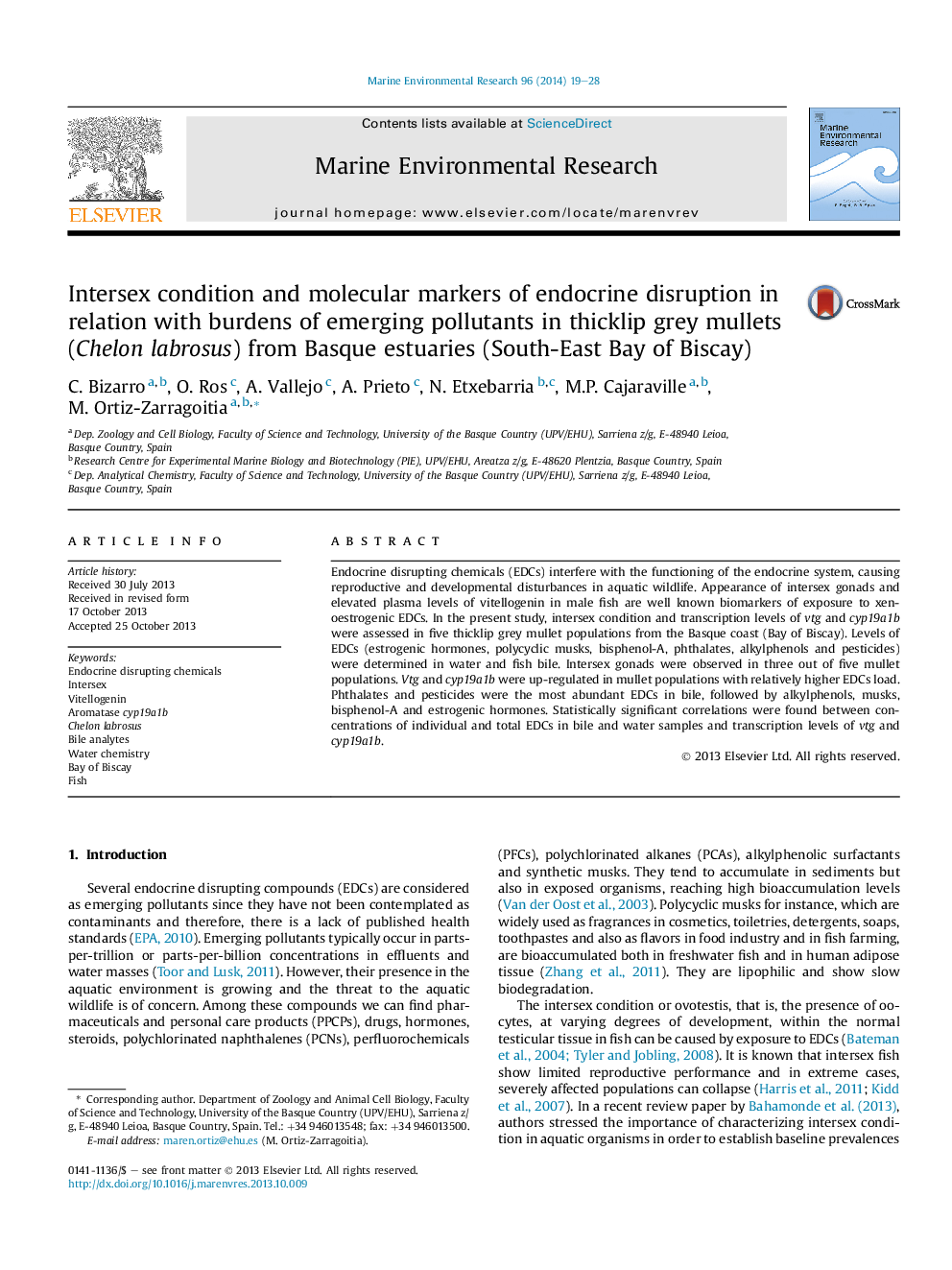| Article ID | Journal | Published Year | Pages | File Type |
|---|---|---|---|---|
| 4550812 | Marine Environmental Research | 2014 | 10 Pages |
•We studied 5 mullet (Chelon labrosus) populations from the Basque coast (Bay of Biscay).•Endocrine disrupting compounds were determined in water and bile samples.•Bile contained phthalates, pesticides, alkylphenols, bisphenol A, estrogenic hormones and musks.•Intersex condition was detected in 3 out of 5 populations.•Up-regulation of vtg and cyp19a1b was observed in male and intersex fish.
Endocrine disrupting chemicals (EDCs) interfere with the functioning of the endocrine system, causing reproductive and developmental disturbances in aquatic wildlife. Appearance of intersex gonads and elevated plasma levels of vitellogenin in male fish are well known biomarkers of exposure to xenoestrogenic EDCs. In the present study, intersex condition and transcription levels of vtg and cyp19a1b were assessed in five thicklip grey mullet populations from the Basque coast (Bay of Biscay). Levels of EDCs (estrogenic hormones, polycyclic musks, bisphenol-A, phthalates, alkylphenols and pesticides) were determined in water and fish bile. Intersex gonads were observed in three out of five mullet populations. Vtg and cyp19a1b were up-regulated in mullet populations with relatively higher EDCs load. Phthalates and pesticides were the most abundant EDCs in bile, followed by alkylphenols, musks, bisphenol-A and estrogenic hormones. Statistically significant correlations were found between concentrations of individual and total EDCs in bile and water samples and transcription levels of vtg and cyp19a1b.
